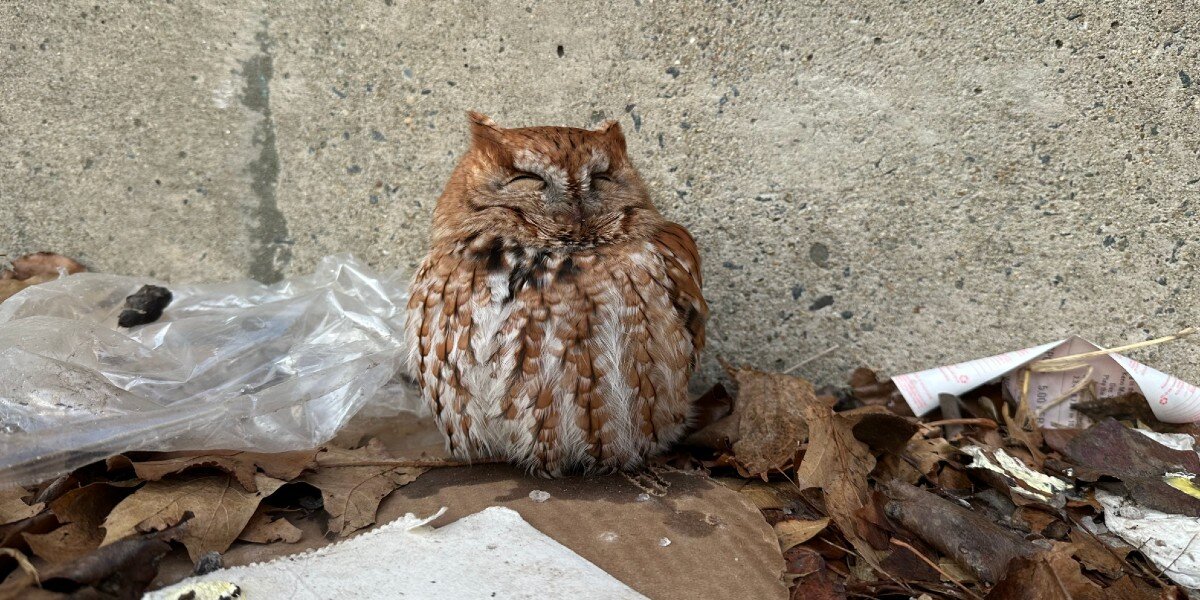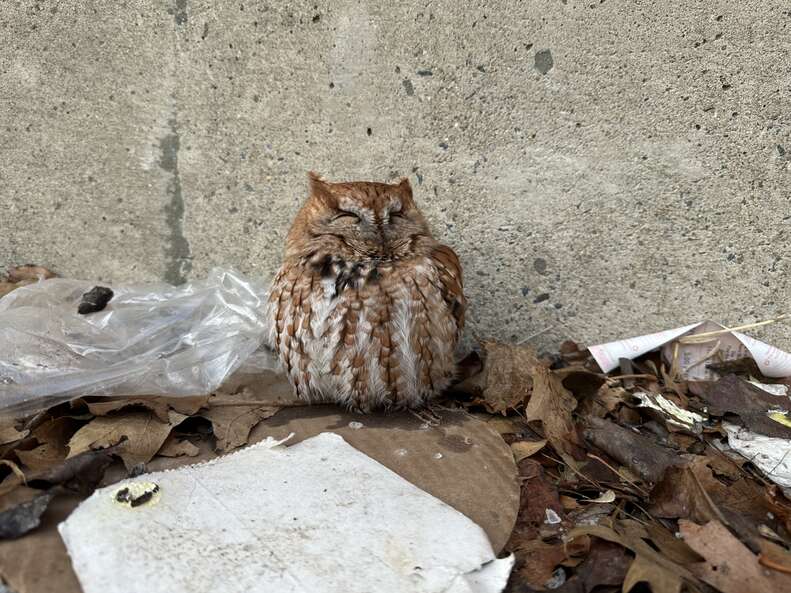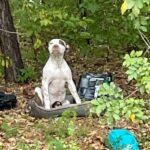Owl “on Death’s door” waits outside post office, hoping someone will notice him

A Salem, Massachusetts, resident was recently out walking their dog when they saw a tiny feathered animal huddled in front of the post office. When they got closer, they realized the animal was a screech owl — and he was struggling.

“[He was] sitting on a pile of wet leaves and trash, and just not moving,” Jess Reese, founder of Salem Wildlife Rescue and licensed wildlife rehabilitator, told The Dodo.
At only 6 inches tall, the owl easily could have gone unnoticed. As Newhouse Wildlife Rescue wrote on Facebook, he was “on death’s door.” But thankfully, the Good Samaritan not only spotted him, but immediately called Reese for help.

As Reese rehabilitates mammals, not raptors, she transferred him to Newhouse Wildlife Rescue, who did a thorough examination. The rescue confirmed what Reese had suspected: The owl had been poisoned with a second-generation anticoagulant rodenticide (SGAR).
When a raptor or other carnivorous animal consumes rodents with SGARs in their system, they absorb the poison. The poisoning leads to blood clotting issues, which in many cases result in death. Time was of the essence as the team at Newhouse Wildlife Rescue worked to stabilize the animal.
While still on oxygen, Jane Newhouse, founder of Newhouse Wildlife Rescue, transported the owl to Cape Ann Wildlife, Inc., where he received intensive, around-the-clock care. Erin H., Cape Ann Wildlife treasurer, board member and licensed wildlife rehabilitator, treated the owl with oxygen, vitamin K and fluids.

Unfortunately, wildlife rehabilitators deal with rodenticide poisoning cases all too frequently.
“It’s really heartbreaking seeing what humans can do to these raptors,” Erin, who preferred to have her last name omitted, told The Dodo.
SGARs are a huge issue that affects the whole ecosystem: When animals who eat rodents die of rodenticide poisoning, the rodent population increases, so people use even more poison.

“We are killing the predators that naturally control the rodent population,” Erin said.
SGARs can even be dangerous for children and house pets. To keep your local community safe, it’s important to employ safe alternatives to SGARs. Make sure to keep trash secured and consider using humane, poison-free traps.
Before long, the owl started feeling much better. After over two weeks of care, Erin could tell he was ready to return home.

The day of the release, it was as if he hadn’t been struggling to survive just a couple days earlier.
“He shot out of the carrier,” Erin said. “He flew over a big field [and] went straight up into a tree.”

Now, thanks to the dedicated work of the wildlife rescuers, this adorable owl gets a second chance.


